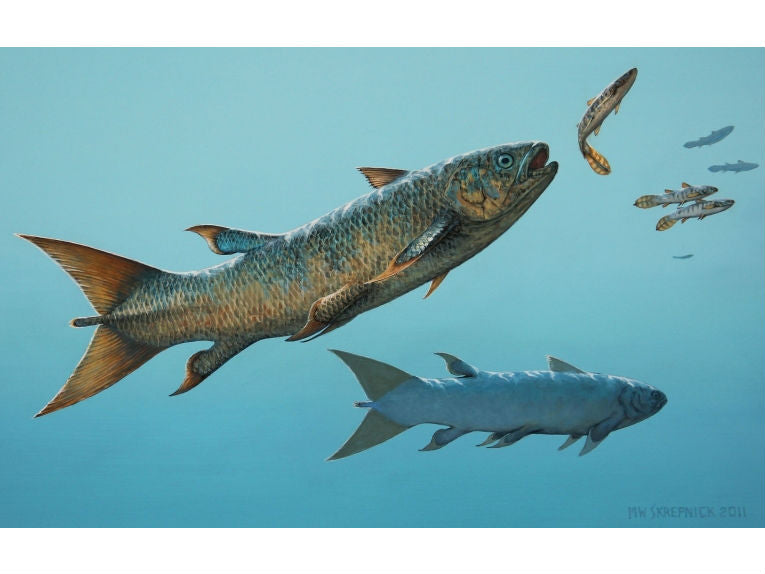A new ancient killer fish fossil found in Canada has been described for the first time. The extinct species of 'rebel coelacanths' is thought to have been a quick-swimming predator with a forked tail like that of a tuna. Coelacanths were dubbed 'living fossils' after they were thought to be extinct, but one was discovered in 1938 in South Africa.
The living coelacanths are slow swimmers with strange triple-lobed broad tails, unlike the shark-like three-foot fish, which lived around 240 million years ago.
Dr John Long, from the Natural History Museum of LA County, Los Angeles, who is a fish fossil expert, but did not contribute to the study, says, "This is an amazing discovery which overturns the age old image of coelacanths as slow moving fishes and shows the resilience of the group to come back in true fighting form after surviving the world's most devastating mass extinction.
The fossil species, named Rebellatrix or 'rebel coelacanth', was discovered by collectors from Peace Region Palaeontology Research Centre, at Tumbler Ridge, British Columbia.
The fossil, which is the most complete so far found of the species, have been outlined by two scientists from the University of Alberta in the Journal of Vertebrate Paleontology. The species, which had a huge symmetrical tail, which is very different to any other coelacanths, has been placed in its own family. The fossil was found on the sloped of the Hart Ranges of the Canadian Rockies, in Wapiti Lake Provincial Park, British Columbia. The fish swam to the west of the Pangaea supercontinent.
The report's, lead author Andrew Wendruff, of the University of Alberta, in Edmonton, says its distinctive shape could be due to two options.

Rebellatrix Fossil; Photo by Andrew Wendruff and Mark Wilson
The first is that the fossil record is still largely undiscovered and the second is that the fish's shape is a result of the evolution to fill an empty niche in the mass-extinction towards the end of the Permian Period around 250 million years ago.
Fellow author, Dr. Mark Wilson, points out that the rigidity and shape of the tail fin is not found in other coelacanth species, but can be seen in predators such as the tuna and barracuda.
The characteristics indicate that Rebellatrix pursued and preyed on other fish. Coelacanths peaked during the dinosaur age, but only two species are thought to exist today. It fills the evolutionary stage between many bony fish and tetrapods, four-legged land creatures.
Coelacanth is adapted from the Latin for 'hollow spine' and is named after to the hollow caudal fin rays of the first fossil specimen found in 1839. They belong to the subclass Actinistia, which are relations of lungfish and some extinct Devonian fish.
To see the full report, visit the current issue of the Journal of Vertebrate Paleontology.










